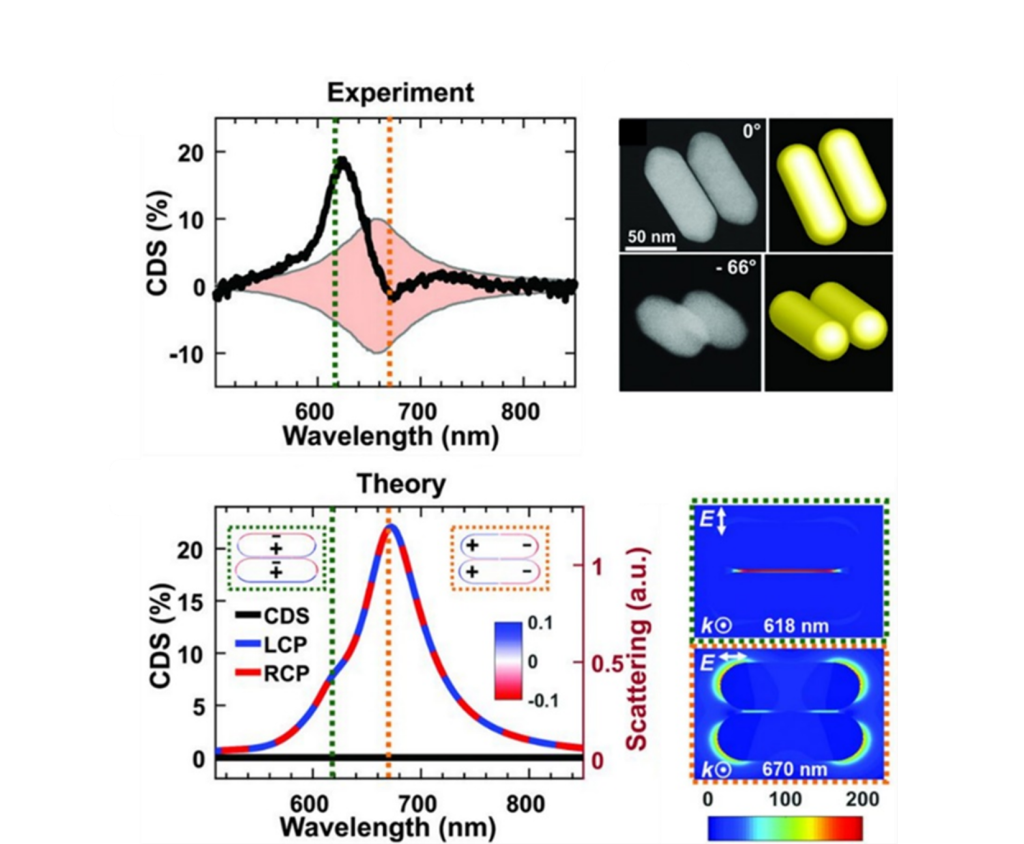
Sensitive detection of chirality holds great importance in the realm of drug development as the chiral configuration of a biomolecule significantly influences its molecular recognition and, consequently, its functionality. Plasmon-coupled circular dichroism (PCCD) has emerged as a promising approach for the sensing of chiral molecules through coupling between molecular chirality and the localized surface plasmon resonance. PCCD relies on the introduction of chiral analytes to induce chirality in the nanoantenna, with additional enhancement achieved by positioning chiral molecules within plasmonic hotspots.
This induced CD has been suggested to occur through several mechanisms: near-field dipole-dipole interactions, orbital hybridization, and far-field electromagnetic coupling. Initial findings suggest the potential achievability of single-molecule PCCD, highlighting its promise for highly sensitive measurements. However, there are several practical considerations related to PCCD sensor design that require further exploration. Hotspot-enhanced PCCD, for example, is demanding because it requires the ability to trap the analyte between nanoparticles.
This problem has been overcome with DNA origami or by using simple chiral molecules with thiol groups. Nevertheless, even in meticulously engineered systems, the irregularity in nanoparticle assemblies can introduce structural chirality, which may compete with the desired PCCD signal making single-molecule detection challenging.
The Link Research Group is interested in achieving single-molecule detection efficiency to probe the binding and conformational changes of single proteins.
Selected publications:
- L. A. Warning, A. Rafiei Miandashti, L. A. McCarthy, Q. Zhang, C. F. Landes, and S. Link, Nanophotonic Approaches for Chirality Sensing, ACS Nano, 15 (10), 15538 (2021)
- Q. Zhang, T. Hernandez, K. W. Smith, S. A. Hosseini Jebeli, A. X. Dai, L. Warning, R. Baiyasi, L. A. McCarthy, H. Guo, D.-H. Chen, J. A. Dionne, C. F. Landes, and S. Link, Unraveling the origin of chirality from plasmonic nanoparticle-protein complexes, Science, 365 (6460), 1475 (2019)
- X. Lan, X. Zhou, L. A. McCarthy, A. O. Govorov, Y. Liu, and S. Link, DNA Enabled Chiral Gold Nanoparticle – Chromophore Hybrid Structure with Resonant Plasmon – Exciton Coupling Gives Unusual and Strong Circular Dichroism, J. Am. Chem. Soc., 141(49), 19336 (2019)